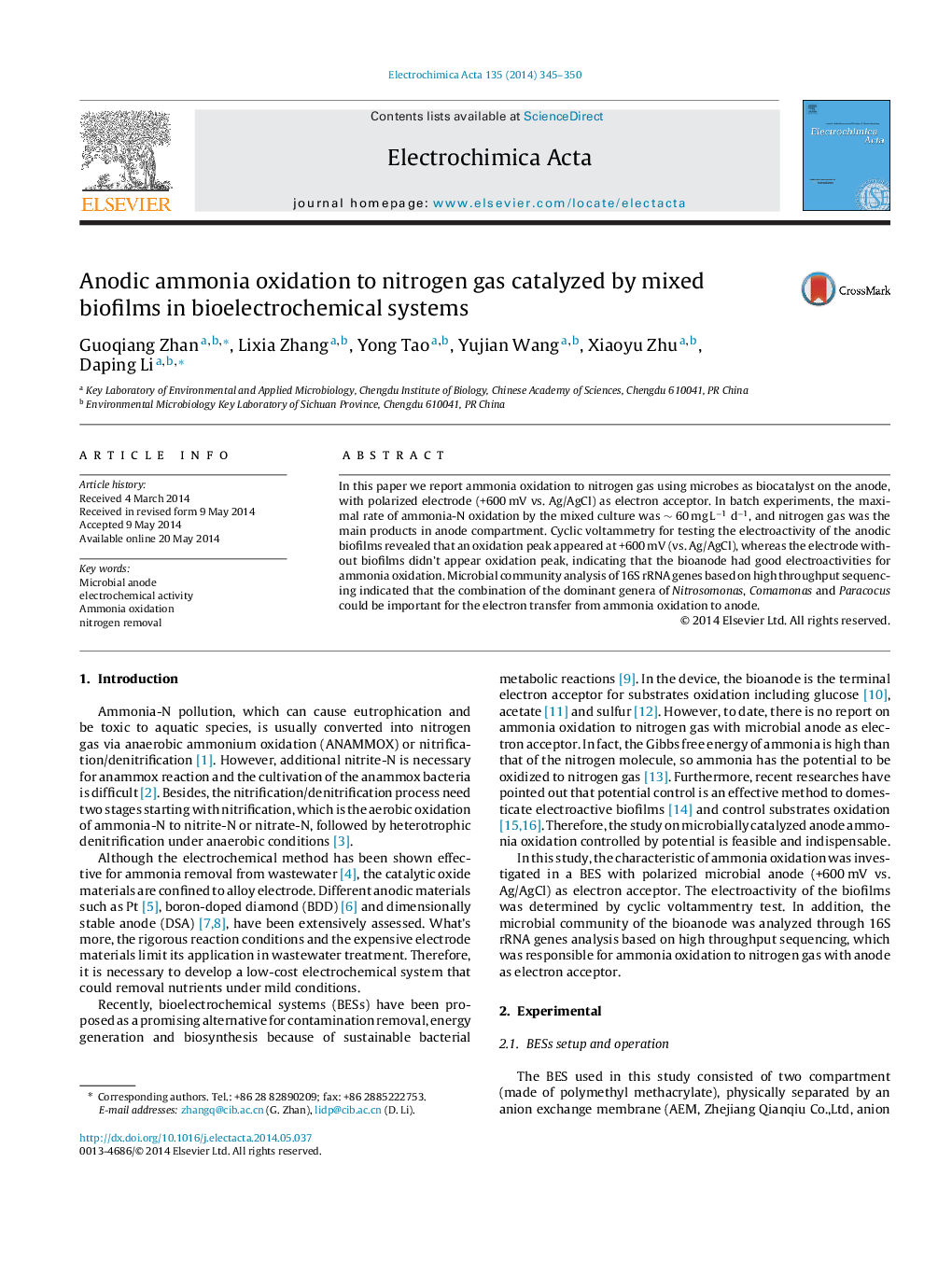| Article ID | Journal | Published Year | Pages | File Type |
|---|---|---|---|---|
| 6613560 | Electrochimica Acta | 2014 | 6 Pages |
Abstract
In this paper we report ammonia oxidation to nitrogen gas using microbes as biocatalyst on the anode, with polarized electrode (+600 mV vs. Ag/AgCl) as electron acceptor. In batch experiments, the maximal rate of ammonia-N oxidation by the mixed culture was â¼ 60 mg Lâ1 dâ1, and nitrogen gas was the main products in anode compartment. Cyclic voltammetry for testing the electroactivity of the anodic biofilms revealed that an oxidation peak appeared at +600 mV (vs. Ag/AgCl), whereas the electrode without biofilms didn't appear oxidation peak, indicating that the bioanode had good electroactivities for ammonia oxidation. Microbial community analysis of 16S rRNA genes based on high throughput sequencing indicated that the combination of the dominant genera of Nitrosomonas, Comamonas and Paracocus could be important for the electron transfer from ammonia oxidation to anode.
Related Topics
Physical Sciences and Engineering
Chemical Engineering
Chemical Engineering (General)
Authors
Guoqiang Zhan, Lixia Zhang, Yong Tao, Yujian Wang, Xiaoyu Zhu, Daping Li,
